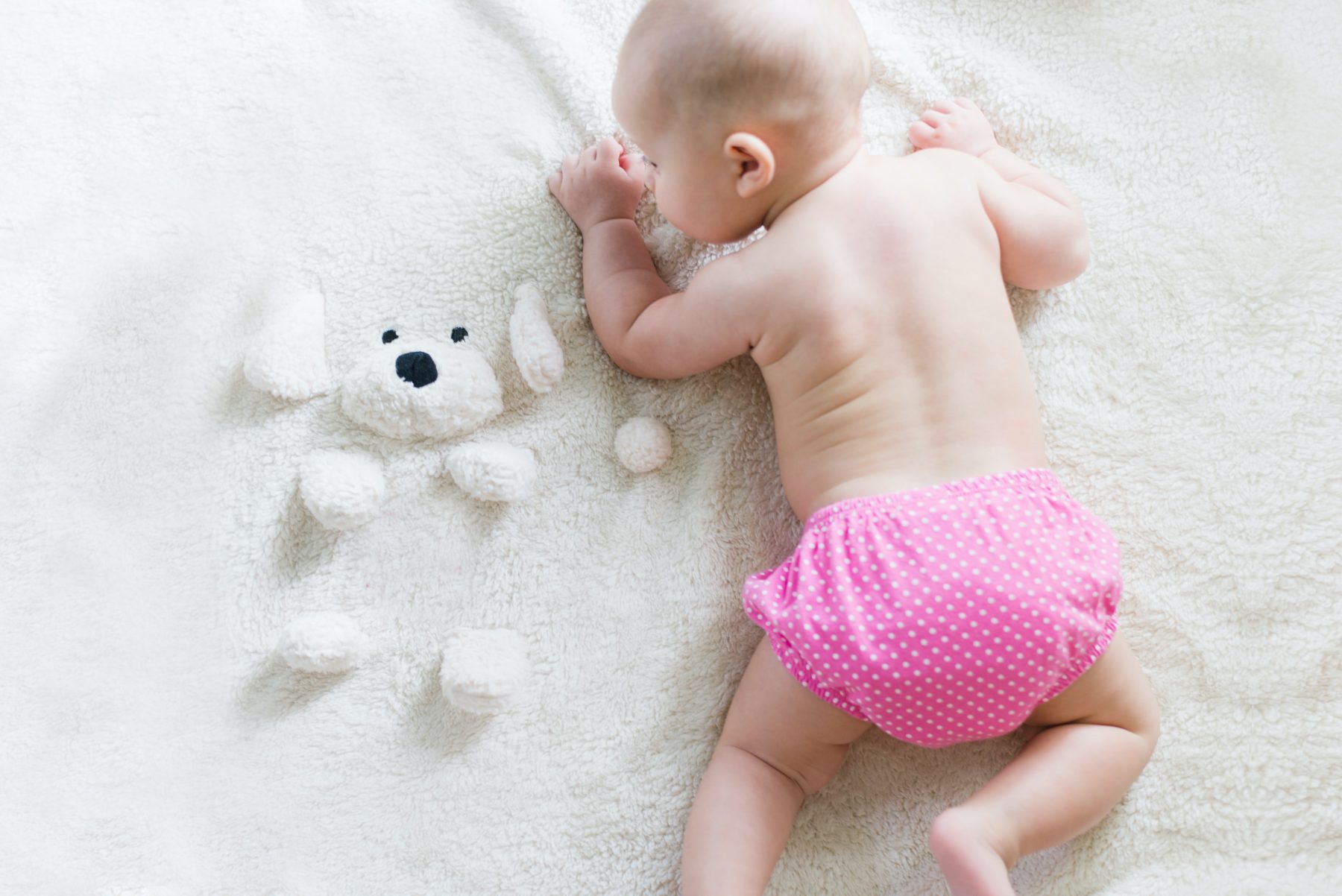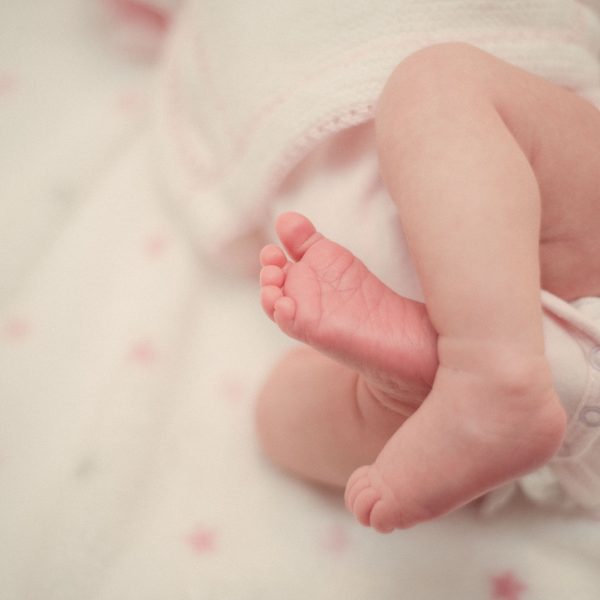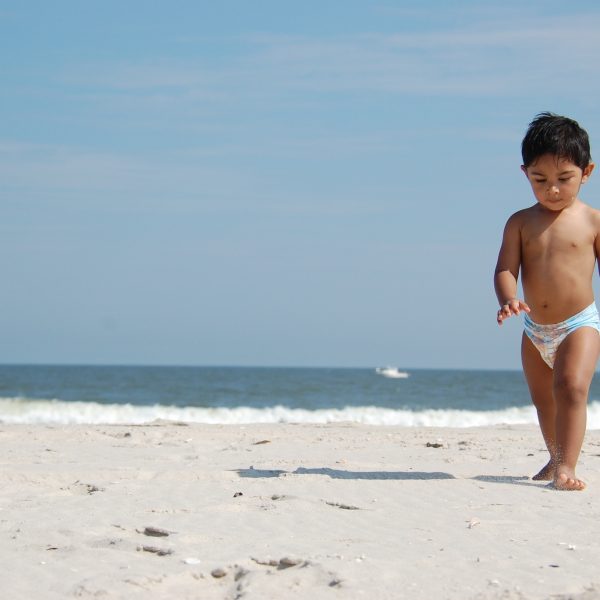Guidance for services wanting to explore environmentally friendly nappies

With a number of early childhood education and care (ECEC) services seeking ways in which to embed sustainability practices into their daily operations, the question of a more sustainable approach to disposable nappies is often raised.
In Australia, 5.6 million disposable nappies are used by Australians each day, equating to two billion disposable nappies that go into landfill in Australia each year, with ECEC services contributing greatly to this load.
Recently Little Sprouts, a specialised sustainability program for early learning centres, prepared advice tailored to services wishing to explore more sustainable options. A summary of this information has been presented below, with the full version available here.
Reusable nappies – the evolution
When many educators think of reusable nappies, they may picture the terry towelling nappies which were popular in the 1970s and 1980s, with safety pins holding them together.
At Coburg Children’s Centre in Melbourne these terry towelling cloth nappies are still in use, as they have been since that time.
Centre coordinator Michelle shared with Little Sprouts that the service has never considered disposables.
“It just wasn’t part of our sustainability philosophy,” she explained. They use the terry towelling squares with Baby BeeHinds covers and send the squares offsite to a commercial laundry service to be cleaned, washing the covers at the centre.
There are, however, other options aside from the traditional terry towelling cloths.
Modern cloth nappies (MCN’s) come in “all shapes and sizes” with main types of nappies available coming with built in covers being pockets, all-in ones and all-in twos.
Pocket nappies and all-in twos come with removable inserts made from absorbent fabric like bamboo, hemp or microfibre, for easy washing and drying. In all-in-ones, the absorbent fabric is attached to the nappy cover which means no separate parts and no putting together the nappies when they are dry, however these types take a little longer to dry.
There are also separate nappy and cover systems including flats (a traditional style of nappy), prefolds (a flat nappy with an absorbent panel in the center) and fitted (where the folding has been done for you). Adding a cover to each of these options makes them waterproof.
Most MCN’s come with snaps which allow you to adjust the nappy to the size of the child as they grow, making them an economical option for services. Velcro is also an option and many educators say these are just as easy to use as a disposable nappy.
Economic considerations
On average, a set of 24 nappies will last from birth until the point where a child is using the toilet independently. While there is an initial outlay cost to prepare for using reusable nappies, Little Sprouts said, “in the long run, this costs thousands of dollars less than disposable nappies.”
Many services would be eligible for wholesale, or heavily discounted prices if buying in bulk and good quality nappies will last years if they are being looked after properly.
There is also the cost to wash the chosen nappies, and the cost for using resources like water and energy.
Here, Little Sprouts explain, “practice makes perfect, so once you get into a rhythm with washing the cloth nappies, your time spent in the laundry will reduce. Gone are the days of soaking your nappies for hours – these days it’s recommended to do a quick pre-hot wash (nappies only) followed by a longer hot wash.”
For those services who choose to outsource the laundering of the nappies, it is suggested to ask questions about if the laundry uses renewable energy or recycled water systems to lessen the environmental impact. Comparisons between the environmental costs of cloth nappies vs disposables are available from the Australian Nappy Association.
Potential disadvantages of the switch to cloth
Some possible disadvantages to using cloth identified by Little Sprouts include:
- More frequent changes may be needed, as cloth nappies do not draw moisture away from the skin, making wet or soiled nappies more immediately noticeable for the baby or toddler
- Nappies cannot be disposed of when on community excursions
- Cloth nappies are bulkier, which may be an issue for families who choose form fitting outfits for their children.
Considerations
Services who have transitioned to cloth suggest that the move begins with a discussion with educators and families, to ensure the choice is collaborative.
Once a service decides to move to cloth, consideration should be given to changing and storage systems for cloth nappies, addressing questions such as where the nappies will be stored before they get washed, what happens when the nappy bin gets full, how to store clean nappies in the change area and how educators will manage solids and disposing of this into the toilet.
Lessons from Palmwoods
Director Anita Nolan from Palmwoods Early Learning Centre on the Sunshine Coast has successfully managed transitioning one early childhood centre to cloth nappies and opened a new centre that is predominantly cloth.
“Our owners are sustainability focused and were very open to cloth when I suggested it – which was a key element to success,” Anita explained.
Legislation prevented them from laundering their own nappies, so they went on the hunt for a local laundry partner. Initially, the price was too prohibitive; however, after a few successful negotiations with the laundry, the costs became attainable.
Palmwoods have opted to provide nappies themselves and have their own brand and style printed on the nappies. They use bamboo liners to make disposing of solids easy (liners come back from the laundry already put back in which saves centre staff time). They store clean nappies in an accessible cupboard under the change station in each of the rooms.
Liners and contents are disposed of in a regular lidded nappy bin and the used nappies are placed in lined nappy buckets with a reusable/washable/zippable wet bag. When full, these are stored in the centre laundry until collected daily each afternoon by the laundry service. Children at the centre get sent home at the end of the day in a disposable unless the parent also uses cloth at home and supplies a fresh one to go home in.
Both Michelle (Coburg Children’s Centre) and Anita (Palmwoods ELC) believe it’s important to still ensure parents who want their children in a disposable nappy, for whatever reason, are supported and never made to feel judged. They both see the use of cloth by parents at home increasing slowly and most parents are completely on-board with their systems, regardless of what nappy system they use at home.
A series of suggestions as to how to begin the process of cloth nappies in service is included in the original piece, written by Meagan Williams and Carolyn Luder, which may be accessed here, along with a range of further resources.
Popular

Quality
Practice
Provider
Research
Workforce
Honouring the quiet magic of early childhood
2025-07-11 09:15:00
by Fiona Alston

Policy
Practice
Provider
Quality
Workforce
Minister Jess Walsh signals urgent action on safety and oversight in early learning
2025-07-11 08:45:01
by Fiona Alston

Workforce
Policy
Quality
Practice
Provider
Research
The silent oath: Why child protection is personal for every educator
2025-07-17 09:00:31
by Fiona Alston











